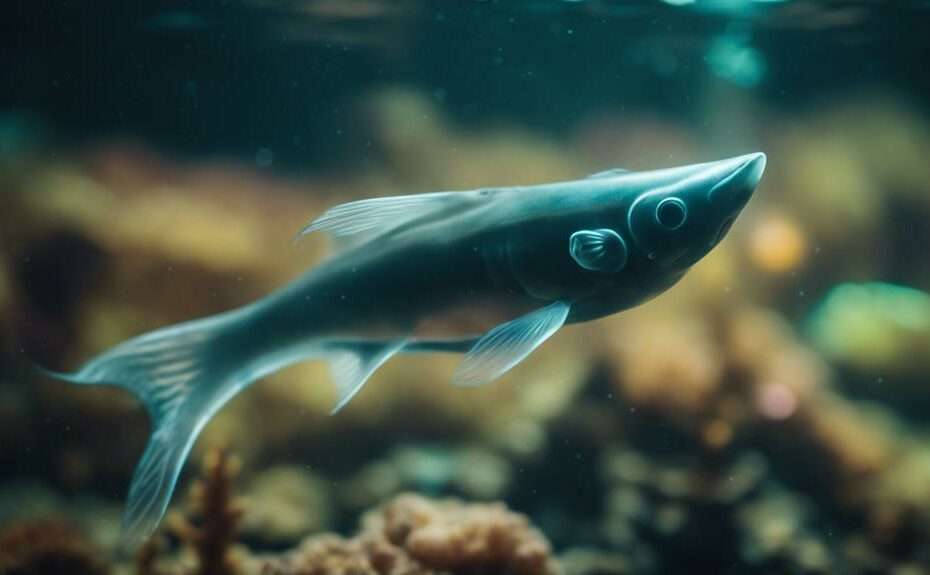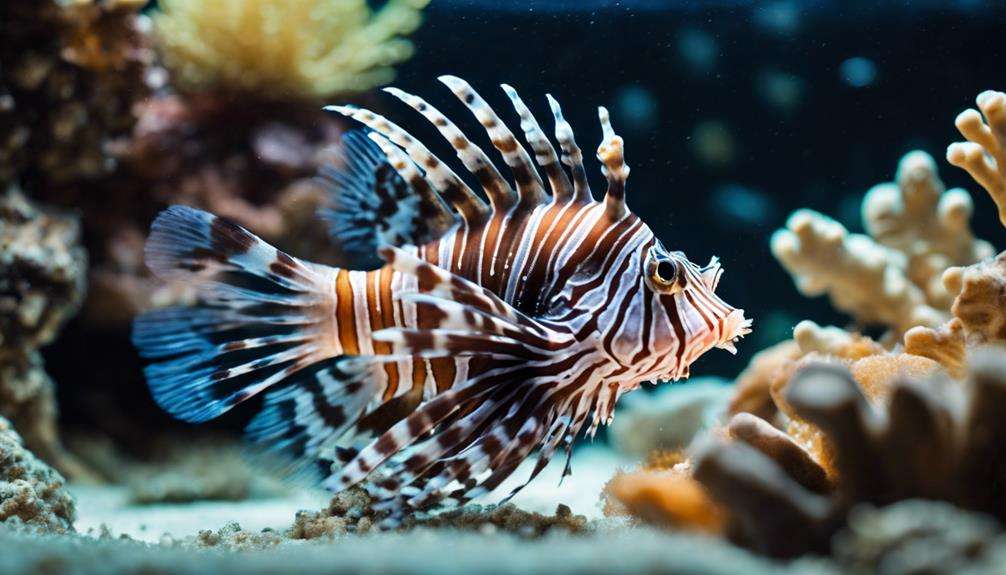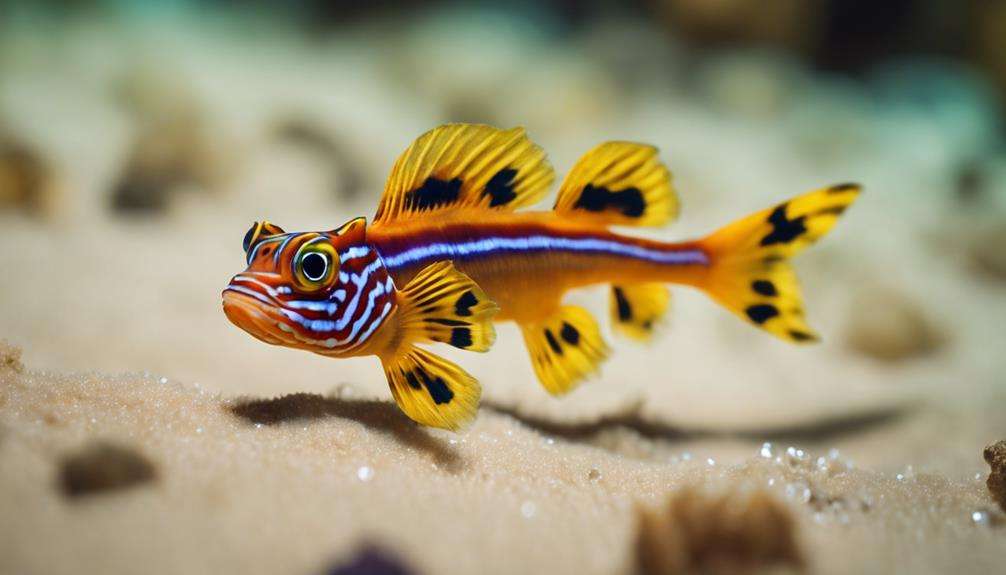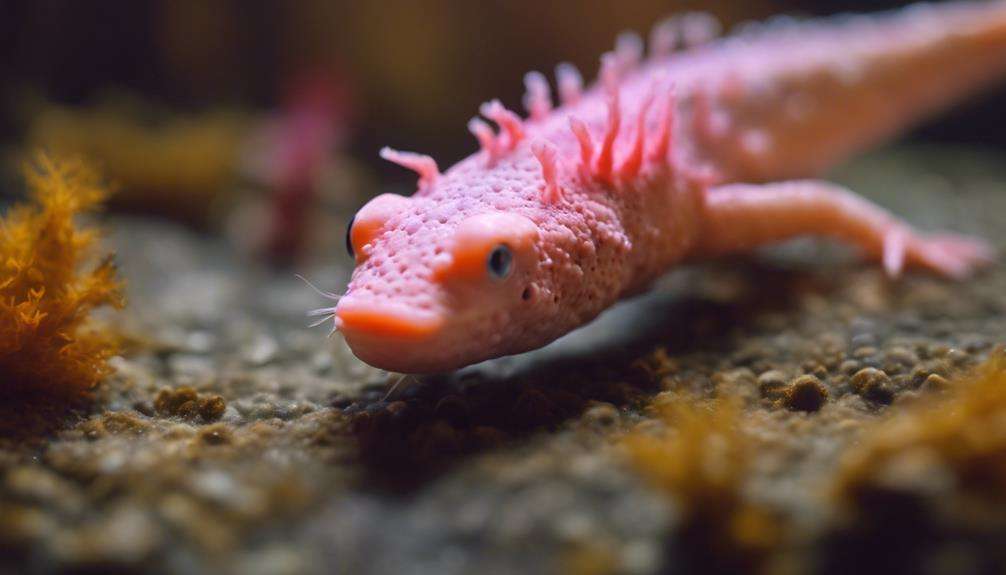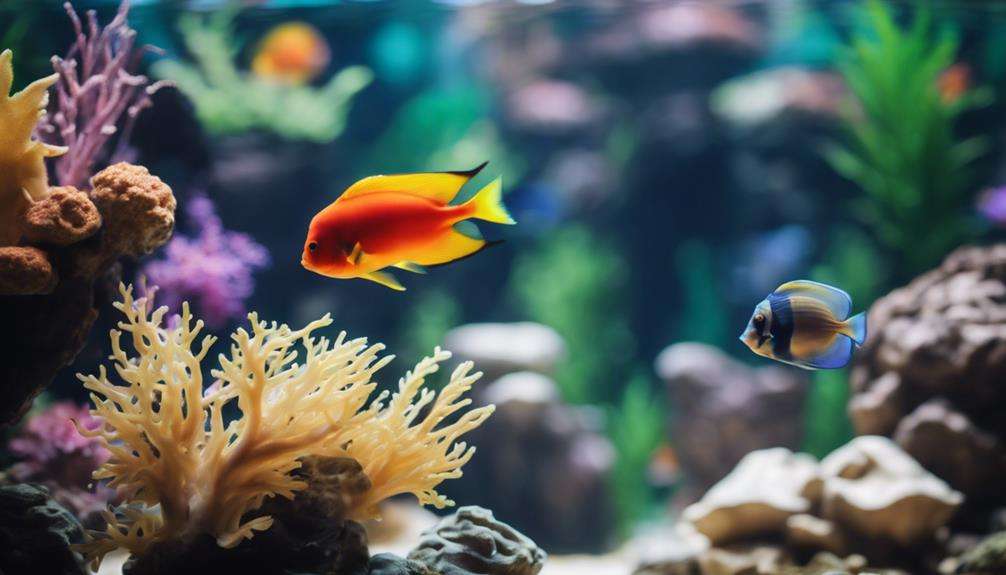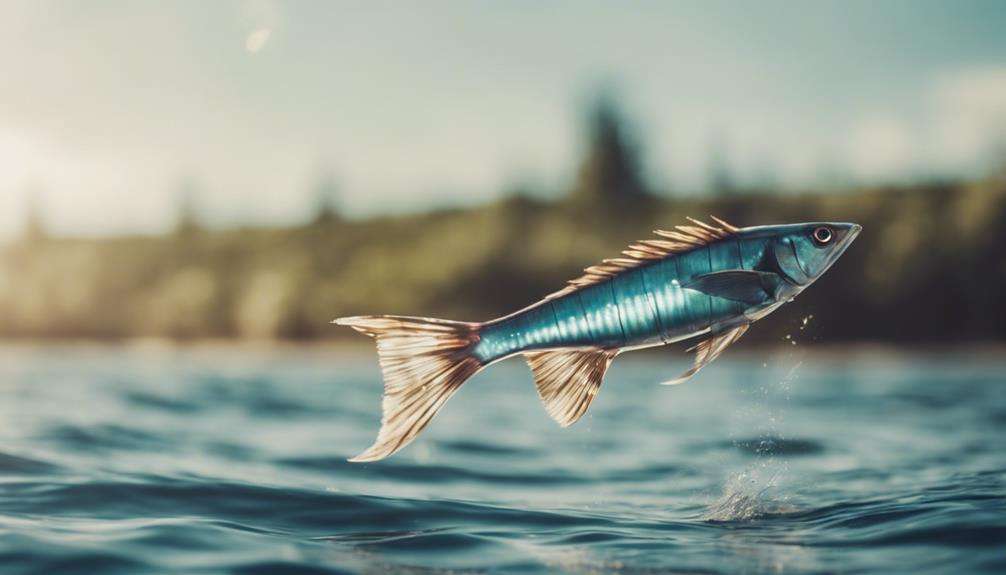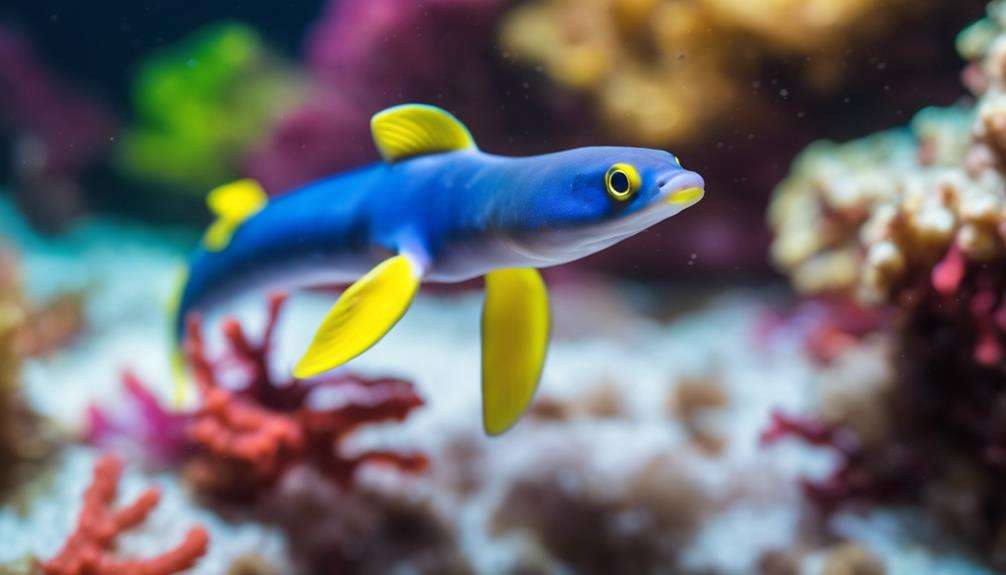Have you ever wondered about the enigmatic world of ghost knifefish species? While their ghostly appearance may intrigue you, there's more to these unique creatures than meets the eye.
From their peculiar hunting techniques to their mysterious nocturnal habits, ghost knifefish have captured the curiosity of many aquatic enthusiasts.
Dive into the depths of their world and uncover the secrets that make them stand out among other fish species.
Key Takeaways
- Rare ghost knifefish species include albino, gold, and platinum variations with unique characteristics.
- Specialized care and precise conditions are essential for breeding these rare ghost knifefish species.
- Ghost knifefish exhibit blade-like appearances, lack dorsal fins, and require dimly lit tanks for thriving.
- Mimicking their natural habitat, understanding their hunting techniques, and providing suitable conditions are crucial for their well-being.
Rare Ghost Knifefish Species Overview
Rare ghost knifefish species, known for their unique color variations and distinct physical features, present a fascinating subject for aquarium enthusiasts and researchers alike. These rare species, such as the albino, gold, and platinum variations, stand out in aquarium settings due to their striking appearances. In comparison to the common black ghost knifefish, these rare species exhibit differences in fin lengths and body shapes, adding to their allure and uniqueness.
Caring for these rare ghost knifefish species can be a specialized task, as their unique characteristics may require specific tank conditions and attention to detail. Due to their rarity, finding these species can be a challenge, and they often come with a higher price tag in the aquarium trade. Breeding and reproducing these rare ghost knifefish in captivity is a task that demands precision and adherence to specific conditions for successful outcomes, making them a prized possession for dedicated hobbyists and researchers alike.
Unusual Physical Characteristics of Ghost Knifefish
With their distinctive blade-like appearance and unique extended anal fin for enhanced maneuverability, ghost knifefish exhibit a set of unusual physical characteristics that distinguish them within the aquatic world. These fish lack dorsal and caudal fins, contributing to their blade-like structure. Their elongated and streamlined bodies enable swift and efficient movement through the water, allowing them to navigate with agility.
The distinctive black coloration of ghost knifefish adds to their mysterious allure, making them stand out in their underwater habitat. This coloration serves as a form of camouflage in their natural environment, aiding in both hunting and avoiding predators. The combination of their elongated bodies, lack of certain fins, and dark coloration makes ghost knifefish uniquely adapted to their nocturnal lifestyle.
These physical traits not only make them fascinating to observe but also showcase the remarkable evolutionary adaptations of this species.
Habitat Requirements for Ghost Knifefish
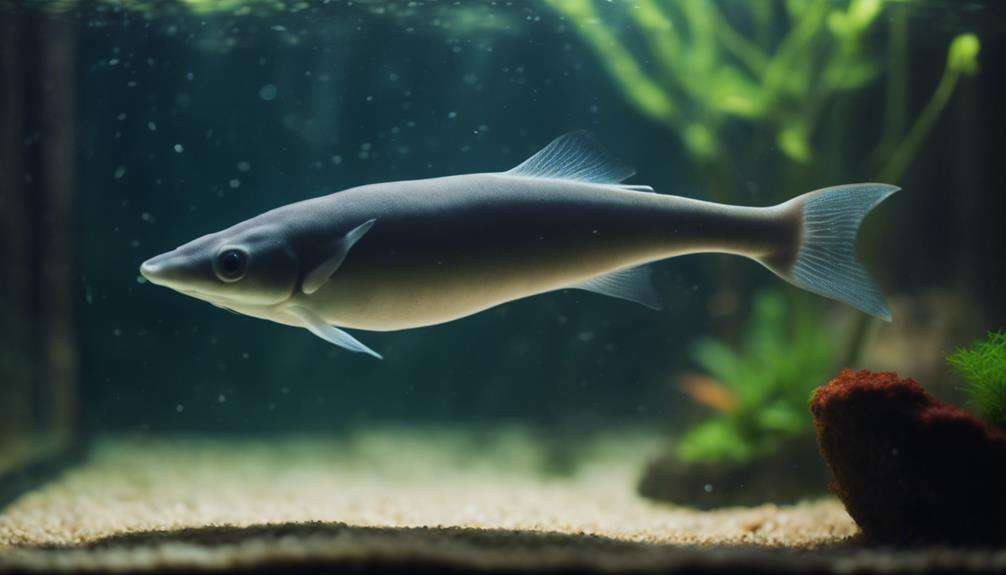
Ghost knifefish require specific habitat conditions to thrive in captivity, mirroring their natural environment in sandy bottom creeks of South America. To ensure the well-being of these unique fish, it's crucial to replicate their native habitat as closely as possible.
Here are some key habitat requirements for ghost knifefish:
- Sandy Bottom Creeks: Mimic the sandy substrate found in their natural habitat to provide a familiar environment for burrowing and foraging behaviors.
- Dimly Lit Tanks: Opt for low lighting in the tank to accommodate the ghost knifefish's specialized eyesight adapted for dim conditions.
- Tank Size: Start with a 30-40 US gallon tank for smaller ghost knifefish and upgrade to an 80-90+ US gallon tank as they grow to ensure ample space for movement.
- Electric Organ: Create a safe and spacious tank layout that allows these fish to utilize their electric organ effectively for navigation and communication.
Feeding Habits of Ghost Knifefish
Ghost knifefish exhibit a carnivorous diet, primarily consuming worms, bloodworms, brine shrimp, and pellets. Their feeding habits may include preying on small fish and invertebrates within their tank environment.
Understanding their dietary requirements and hunting techniques is essential for ensuring their optimal health and adaptation in captivity.
Feeding Preferences of Ghost Knifefish
When observing the feeding habits of ghost knifefish, it becomes evident that their primary diet consists of:
- Worms
- Bloodworms
- Brine shrimp
- Pellets
Ghost knifefish, being carnivorous creatures, show a strong preference for these food sources. Their feeding preferences align with their natural inclination towards meat-based foods. These fish may occasionally target small fish and invertebrates in their tank environment.
Although initially shy, ghost knifefish can be trained to accept food directly from your hand, showcasing their adaptability. To maintain a well-rounded diet, they favor a combination of frozen, freeze-dried, and pellet foods.
You'll notice that ghost knifefish are active hunters, displaying a keen interest in seeking out their preferred meals within the tank.
Hunting Techniques Used
Observing the feeding behavior of black ghost knifefish reveals intricate hunting techniques employed in capturing their preferred prey items. These elusive fish utilize advanced electrosensory acquisition strategies to detect the electrical fields produced by their prey.
Once a potential meal is located, the black ghost knifefish swiftly maneuvers through the water using its elongated body and fin movements to stalk and capture the unsuspecting prey. Their hunting techniques are finely tuned to strike with precision, making them efficient predators in the aquarium.
Dietary Requirements and Adaptations
How do the dietary requirements and feeding habits of black ghost knifefish contribute to their overall health and well-being in captivity? Black ghost knifefish have unique feeding habits that play a crucial role in their health and vitality:
- Carnivorous Diet: These fish primarily feed on worms, bloodworms, brine shrimp, and pellets to meet their nutritional needs.
- Preying Behavior: In their tank environment, they may hunt small fish and invertebrates for additional sustenance.
- Training Opportunities: While initially shy, black ghost knifefish can be trained to eat directly from your hand, improving their social interaction and feeding experiences.
- Balanced Diet: Providing a mix of frozen, freeze-dried, and pellet foods ensures they receive essential nutrients for optimal health.
Monitoring their feeding habits is crucial to maintain their well-being and ensure they're receiving adequate nutrition.
Tank Setup for Ghost Knifefish
To properly care for ghost knifefish, ensure your tank setup meets their specific requirements for space, water parameters, and hiding spots. Ghost knifefish require a tank size of at least 55 gallons when young, but as they grow into adulthood, a larger tank of 120-180 gallons becomes necessary to accommodate their size and territorial behavior adequately. The tank should maintain a pH range of 6.8-7.8 and a temperature of 75-82°F (24-28°C) to promote optimal health for these unique fish.
When setting up the tank for ghost knifefish, it's essential to provide ample hiding spots such as PVC pipes, rock caves, and driftwood. These hiding spots help the knifefish feel secure and reduce stress levels. As they grow, upgrading the tank decor is crucial to ensure they've enough space to move around comfortably and establish territories.
When selecting tank mates for ghost knifefish, it's important to avoid aggressive species and small fish that may become prey. Creating a harmonious tank environment will contribute to the overall well-being of your ghost knifefish.
Ghost Knifefish Breeding Insights
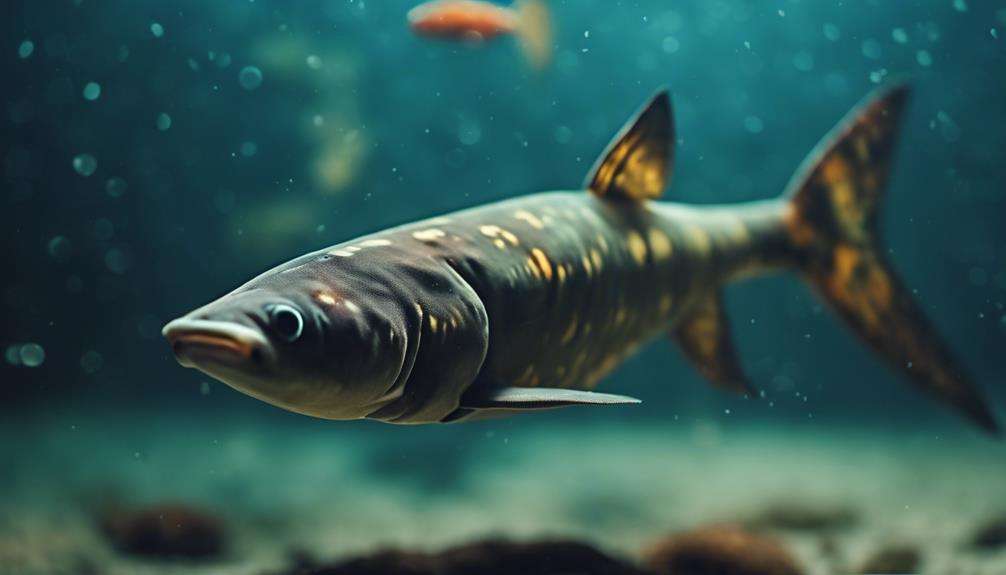
When considering Ghost Knifefish breeding insights, understanding their intricate breeding habits provides a foundation for successful reproduction in captivity.
Care for offspring becomes crucial as these unique fish require specialized conditions to thrive during early stages.
Environmental factors play a significant role in impacting the breeding success of Ghost Knifefish.
Breeding Habits Overview
Breeding habits of black ghost knifefish present a challenging puzzle for researchers due to limited documented observations in captivity. Understanding the reproduction of these fish is hindered by their secretive behavior during breeding.
- Rare Observations: Breeding behaviors are scarcely witnessed in captivity due to the elusive nature of black ghost knifefish.
- Lack of Detailed Data: The scarcity of documented cases contributes to the overall limited understanding of their reproductive processes.
- Successful Breeding Reports: While some successful breeding instances have been noted, they aren't extensively documented.
- Nocturnal Challenges: Their nocturnal activity further complicates the study of their breeding habits.
Care for Offspring
While the breeding habits of black ghost knifefish remain enigmatic, understanding their care for offspring is crucial for successful reproduction in captivity.
Ghost knifefish are known to produce weak electric fields to communicate and navigate. During breeding, males display unique courtship behavior, possibly involving electrical signals to attract females. Limited reports suggest that successful breeding may require mimicking natural conditions, including the provision of suitable hiding spots for the offspring.
The parental care of ghost knifefish towards their young isn't well-documented, with further research needed to understand the intricacies of raising offspring in captivity.
Environmental Factors Impact
To optimize the breeding success of ghost knifefish, meticulous attention to environmental factors such as water quality, temperature, and tank size is imperative.
- Water Quality: Ghost knifefish require clean water with stable parameters to thrive and breed successfully.
- Temperature: Maintaining a temperature range of 75-82°F (24-28°C) is crucial for the reproductive behaviors of ghost knifefish.
- Tank Size: Providing ample space in the tank allows for natural behaviors and reduces stress during breeding attempts.
- Electric Organ Discharges: Understanding the role of electric organ discharges in communication and courtship rituals is essential for enhancing breeding outcomes in ghost knifefish.
Common Health Issues in Ghost Knifefish
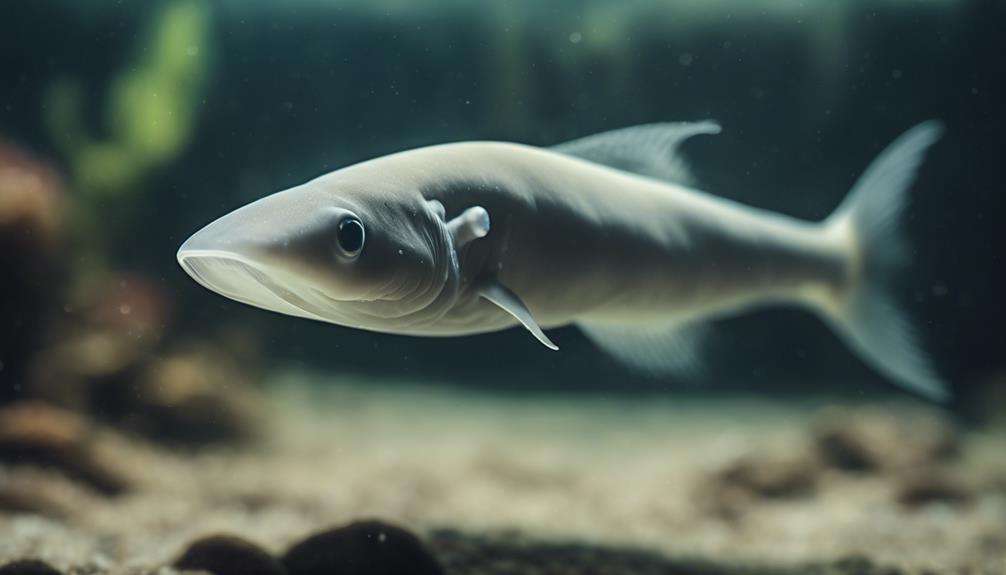
Due to their lack of scales, black ghost knifefish are particularly prone to skin diseases, such as Ich, making it crucial to monitor their health closely. Ich, a common parasite, presents as white spots on their skin, signaling a potential health concern.
To combat skin diseases like Ich, maintaining a balanced diet is essential. Offering live or frozen foods such as bloodworms and brine shrimp ensures they receive the necessary nutrients for their well-being. Feeding them once a day during their active hours supports their nutritional requirements and overall health.
Careful observation and proper care are crucial to prevent common health issues and promote the longevity of ghost knifefish in captivity. By attending to their specific needs, including dietary considerations and vigilant health monitoring, you can help safeguard these unique creatures from skin diseases and other ailments that may arise.
Ghost Knifefish Behavior and Temperament
Ghost knifefish exhibit fascinating hunting patterns. They often rely on their electrosensory system to locate prey in the dark. Their social interactions can be marked by territorial behaviors and aggression towards smaller tank mates.
Understanding these intricate behaviors adds depth to the study of ghost knifefish behavior and temperament.
Hunting Patterns
During their nocturnal hunts, ghost knifefish exhibit a remarkable reliance on their electrolocation abilities to efficiently capture prey in the dark.
- The ghost knifefish uses weak electric discharges to sense its surroundings and locate potential prey items.
- Specialized electroreceptor organs help the fish detect electrical signals emitted by other organisms, aiding in prey detection.
- Stealthy movements combined with precise electrolocation allow ghost knifefish to sneak up on their prey without being detected.
- These fish display predatory behavior, targeting small fish, invertebrates, and other suitable prey for their meals.
Social Interactions
In their social interactions, ghost knifefish exhibit a preference for a relatively solitary lifestyle, displaying territorial behavior towards conspecifics. These unique creatures tend to stake out their territory within the tank, often showing aggression towards other ghost knifefish if space is limited. To maintain a peaceful tank environment, it's advisable to keep only one ghost knifefish per tank to prevent territorial disputes.
While they may be territorial with their own kind, ghost knifefish generally coexist peacefully with non-aggressive tank mates. It's crucial to carefully select companions for ghost knifefish due to their lack of scales, which makes them susceptible to injuries. When choosing tank mates, opt for fish that aren't overly aggressive and are too large to fit in the ghost knifefish's mouth.
Compatible Tank Mates for Ghost Knifefish
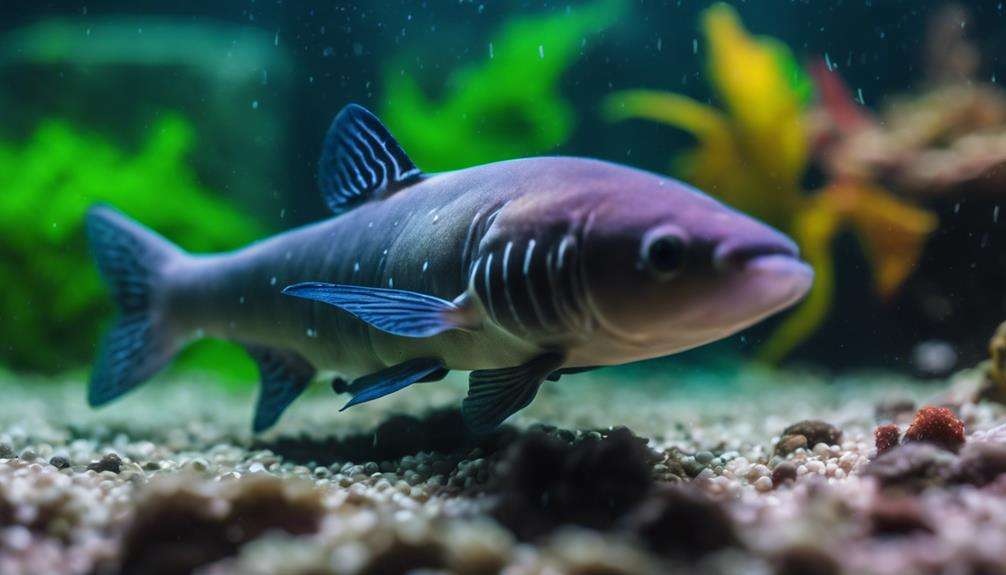
When selecting tank mates for black ghost knifefish, consider choosing similar-sized, peaceful species like Geophagus cichlids, catfish, and angelfish to promote a harmonious aquatic environment.
- Geophagus Cichlids: These cichlids are known for their peaceful nature and can coexist well with ghost knifefish, creating a tranquil tank environment.
- Catfish: Catfish species such as Corydoras or Plecos are compatible tank mates due to their calm demeanor and bottom-dwelling behavior, complementing the ghost knifefish's mid-water swimming habits.
- Angelfish: Angelfish are another suitable choice as they're generally peaceful and occupy the upper levels of the tank, minimizing competition for space with the ghost knifefish.
- Avoid Aggressive Species: It's crucial to steer clear of aggressive tank mates like cichlids and fast-moving fish such as rainbowfish to prevent conflicts and ensure the well-being of your ghost knifefish.
Tips for Caring for Ghost Knifefish
Consider the following essential guidelines to ensure optimal care for your ghost knifefish in your aquarium setting.
Ghost knifefish require a tank size of 30-40 US gallons when smaller, increasing to 80-90+ US gallons as they grow. It's imperative to provide a tank large enough to accommodate their growth adequately.
These fish are sensitive to bright light, so maintaining a dimly lit tank is crucial for their well-being. Additionally, ghost knifefish can exhibit aggression towards smaller tank mates due to their predatory nature, so choose companions carefully.
While there are limited reports of ghost knifefish reproduction in captivity, providing a secure lid is essential as these fish have been known to jump out of tanks.
Frequently Asked Questions
Can Ghost Knife Fish See?
Yes, ghost knife fish can see exceptionally well. Their optimized eyesight is crucial for exploring vision capabilities, aiding their nocturnal behavior and hunting techniques. Their ability to see in low light is essential for survival and prey location.
What Fish Are Best With Ghost Knife?
When considering tank mates for ghost knifefish, focus on compatibility to prevent aggression. Choose peaceful freshwater species like Electric Blue Acara, Silver Dollar Fish, and Cory Catfish. Providing ample hiding spots fosters a harmonious environment.
Is Ghost Knife Fish Rare?
Ghost knife fish are not rare in the aquarium trade. Their behavior, habitat, and breeding have been well-documented. You can easily find these intriguing fish for sale due to their popularity among aquarists.
What Is the Biggest Ghost Knife Fish?
When considering the largest specimens of ghost knifefish, it's crucial to understand their habitat preferences and breeding behaviors. These factors play a significant role in the overall size and health of these unique aquatic creatures.
Conclusion
As the night falls, the mysterious Ghost Knifefish emerges from the shadows, its ethereal presence captivating all who gaze upon it. With its unique physical characteristics and intriguing behavior, this species remains an enigmatic wonder of the aquatic world.
Carefully tending to their needs and observing their enigmatic ways will only deepen the fascination and appreciation for these elusive creatures.
Dive into the world of the Ghost Knifefish and unlock the secrets of the deep.
